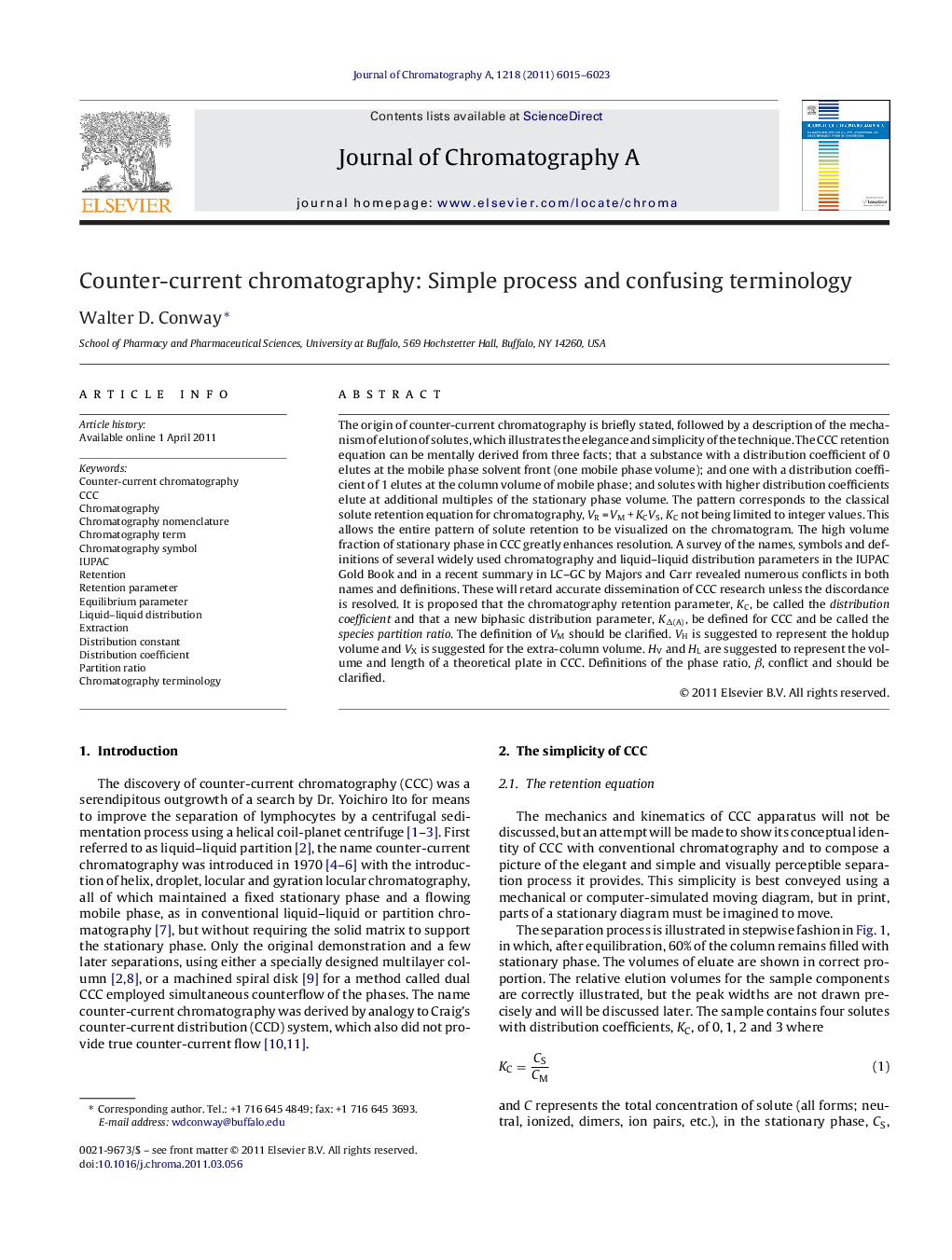| Article ID | Journal | Published Year | Pages | File Type |
|---|---|---|---|---|
| 10547790 | Journal of Chromatography A | 2011 | 9 Pages |
Abstract
The origin of counter-current chromatography is briefly stated, followed by a description of the mechanism of elution of solutes, which illustrates the elegance and simplicity of the technique. The CCC retention equation can be mentally derived from three facts; that a substance with a distribution coefficient of 0 elutes at the mobile phase solvent front (one mobile phase volume); and one with a distribution coefficient of 1 elutes at the column volume of mobile phase; and solutes with higher distribution coefficients elute at additional multiples of the stationary phase volume. The pattern corresponds to the classical solute retention equation for chromatography, VR = VM + KCVS, KC not being limited to integer values. This allows the entire pattern of solute retention to be visualized on the chromatogram. The high volume fraction of stationary phase in CCC greatly enhances resolution. A survey of the names, symbols and definitions of several widely used chromatography and liquid-liquid distribution parameters in the IUPAC Gold Book and in a recent summary in LC-GC by Majors and Carr revealed numerous conflicts in both names and definitions. These will retard accurate dissemination of CCC research unless the discordance is resolved. It is proposed that the chromatography retention parameter, KC, be called the distribution coefficient and that a new biphasic distribution parameter, KÎ(A), be defined for CCC and be called the species partition ratio. The definition of VM should be clarified. VH is suggested to represent the holdup volume and VX is suggested for the extra-column volume. HV and HL are suggested to represent the volume and length of a theoretical plate in CCC. Definitions of the phase ratio, β, conflict and should be clarified.
Keywords
Related Topics
Physical Sciences and Engineering
Chemistry
Analytical Chemistry
Authors
Walter D. Conway,
